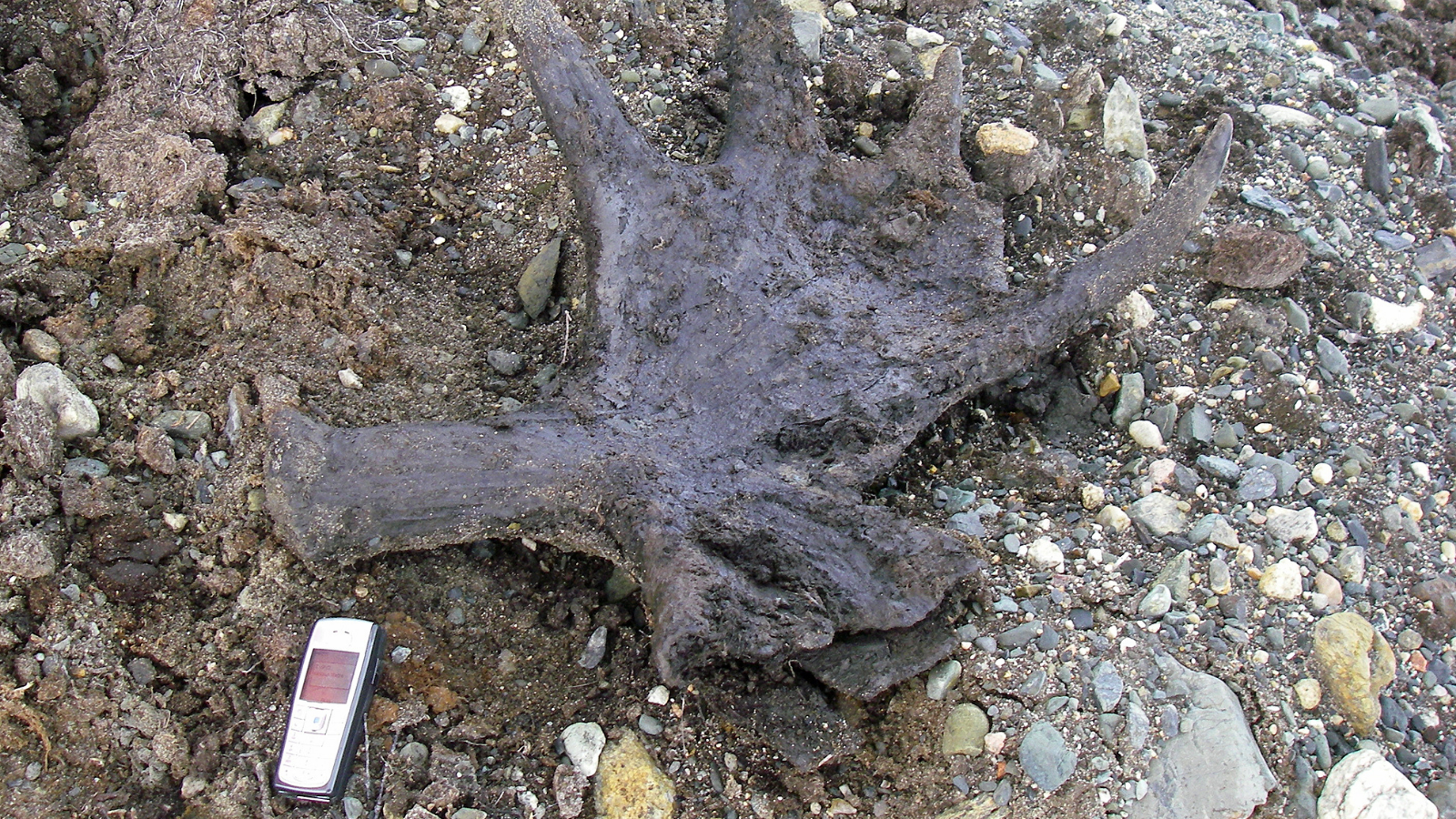December 10, 2020
During excavation work at the open pit of the Kittilä mine in August 2008, an old antler shed by a moose was unearthed from beneath a thick layer of peat. When peat was being removed from the northern part of the open pit with an excavator, the antler became visible in the soil bank, where it was spotted by the observant excavator operator.
The antler had four points and, even though it had suffered some damage, was in relatively good condition. It was 70 cm long and 60 cm wide. The diameter of its base was measured at seven centimeters.
The antler was taken to the University of Helsinki’s Finnish Museum of Natural History (Luomus). Carbon-dating carried out by the museum at the time put it at 8,915 ± 60 years old.
The peat layer on the site where the antler was found was 3.5 meters thick. Underneath the peat, there was a 1–1.5-meter layer of clay and silt, then gravel. The antler became buried at the lower boundary of the peat layer. It is likely that this area was covered by a small lake at the time of the Ice Age and the antler dropped onto its frozen surface.
It is estimated that the ice covering the Kittilä area melted about ten millennia ago, which ties in well with the carbon-dating result. At approximately 10,000 years of age in calendar-year terms, the antler is the oldest ever found in Finland.
The antler is now part of the Museum of Natural History’s collection, and information on it can be found in the museum’s collection database online at http://id.luomus.fi/KS.KN47257.


